Text
Throwdown Thursday
As folks who traverse the internet on a regular basis we have all come across people who have somehow managed to miss every scientific advancement made in the last century (or more) and just refuse to accept they are on the losing end of their own arguments. So, how do you handle these people?
Well, the most important thing is to NOT try and convince them you are right and they are wrong. In the following screenshots, you will see bits of a conversation on a tiktok video of someone I follow meant to adress this comment made on another of his videos. I won't show the whole conversation because, frankly, it's ridiculously long and shouldn't be but the poor person trying to refute him didn't know how to just...well, let the guy live in oblivion. They tried the poor thing.
Anyway, let's dive in with his initial comment:

I bet you can see where this is going. The video was a brilliant explanation on taxonomy and how we classify animals now (we no longer use Linnean classification as genetics have proven it simply doesn't work).
Now, this same commenter turned up in the comments to the new video with more biting stubbornness and some poor soul tried to make him see reason but I could tell from the start this guy wasn't gonna budge. So, how do you deal with someone who won't accept the facts? Use their own methods against them. Here's how you would approach some of the statements and questions this person puts forth in this insanely long debate.
Let's start with his original comment: reptiles never turned into birds.
Where is your proof? How do you know that statement is false? Can you prove it's false? Or, you can use his own words:

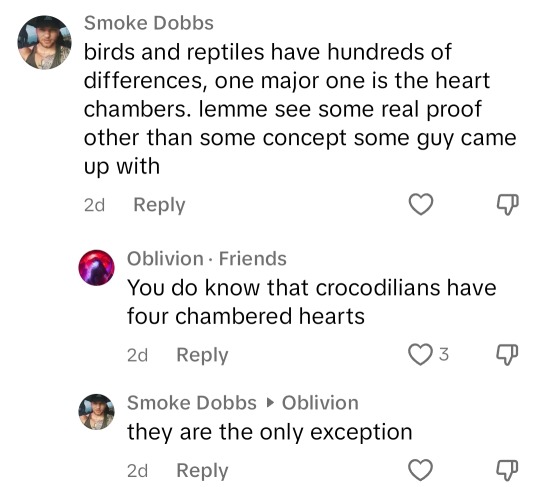
Now, for his first comment on the new post, I think oblivion nailed it. Stating that his one and only example of what differences there are is not a solid defense of his statement. You would then ask if he had other, more irrefutable examples and go from there.

Again, use his own words: "Since you won't accept the evidence fibsh has already put forth, what do you consider 'real evidence'?" Or maybe "What real evidence is there that you are related to you 100th great grandfather besides some written word?"

This one we don't answer with a question, more of a statement. Something like "well, yeah, everything has been interpreted by 'some guy'. A well known example is the Bible.

There's lots that can be brought up here like a list of mesotherms (animals that are neither warm or cold blooded but somewhere in between) such as crocodiles, tegus (technically a warm blooded lizard but I am tossing it in for funsies), leatherback sea turtles, tuna, great white sharks, some species of bees, naked mole rats, hyraxes, echidnas. Notice none of these are all in one group. We have "reptiles", fish, insects and mammals all listed. This just goes to show that body temp is not a good way to classify animals.

However, a guy like this will probably use his favorite catch phrase in this conversation:

Reptiles also are not the only animals to have scales. What about fish? Butterflies? Pangolins?



He claims that you can't use scales as a grounds for relationship (even though he just said all reptiles exclusively had scales) so then ask him "what is a ground for a relationship then?" Make him explain his statement.

This one can be a bit tongue-and-cheek: hell yeah, we're both mammals so we are distantly related. Don't even acknowledge the rest. Agreeing with their statement will confuse the stubborn soul.

Two things I can say to this, one using his own arguments:
Fact: it is your opinion that evolution is an opinion. Give me evidence to back up your claim.
Again, what proves a relationship?



Three times he makes exceptions to this unspoken rule (we think he's using Linnean reasoning but it's a bit hard to tell as he kind of goes all over the place). So I would ask "How many exceptions can be made before the rule is considered invalid?"
Continuing on from his first exception he asks:

So, what do you do when they ask for an answer after arguing a bunch?
"Why? You've haven't accepted any of the other viable scientific evidence given why would this instance be any different?"

I mean, you look like your family, don't you? (And yes, I am including extended family and ancestors) Where is your evidence that you can't know something had offspring? We can only trace human DNA back 10 generations so how to we know they reproduced beyond that? Oh...right, we all exist. (Sarcastic line probably should be left out but I couldn't help myself).

By that logic, identical twins would be considered the same person.

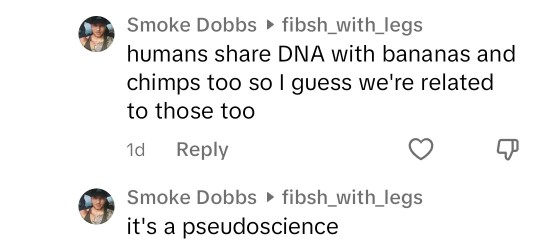
You...you recognize this and don't see ANY connection...AT ALL? And to the second point:

Of course, when he does actually use this he doesn't give any evidence to back up any of his arguments so...bring that up as much as possible.

I thought evolution was pseudoscience. Or only when it doesn't support your opinion?

You weren't alive in the 1940's to collect data so did the Holocaust actually happen then?


What proof do you have? They aren't even attached to anything...(hint, he things they need them to mate).

Then explain why gharials looks so different from all the other crocs.

Do you know what an expert is? It is the opposite of an amateur...which is what you are.

Oh boy...wait till you find out about Mandarin Ducks (they can't breed with other ducks).

It keeps going so if you are interested in seeing the full conversation here is the link:
Anyway, good luck with the tough cookies and remember it's not about being right. It's about making them eat their words.
7 notes
·
View notes
Text
Wordplay Wednesday: Fossil Horizon
If you have ever gone to a public talk at a museum or had a conversation with a paleontologist you might have heard them talk about a bone or fossil horizon.

No, that's not a fossil horizon is. It's far simpler than that. It's just a layer of rock in which fossil bones are embedded.

Here's one of ours at the Evil Tree Bone Bed. In fact, it's one of four fossil horizons we have. How do we tell the difference between all these horizons? First, each horizon is at a different depth in our ancient river bed. second, each horizon has different grain sizes and different fossils. Some even have sedimentary structures.
The lowermost horizon had some carbonized plant remains and some petrified wood fragments in poorly consolidated very fine-grained sandstone to siltstone. All the dark spots in the photo below are chunks of plant.
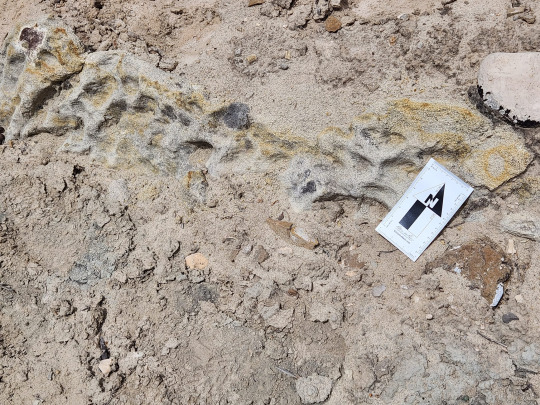
The second fossil horizon is where we find all of our sauropod bones like that rib in the first photo. These are all piled up on each other in a cross-bedded medium-grained sandstone.
The third fossil horizon sits right on top of the second and is filled with heavily eroded bone in coarse- to very coarse-grained sandstone that is also poorly consolidated.

The uppermost fossil horizon contains a nearly complete articulated vertebral column of a small dinosaur contained in a sandy limestone.

Tune in next Monday to learn how we interpret the environment from all of this info!
#paleontology#geology#fossils#dinosaur#sedimen#stra#stratigraphy#taphonomy#field#I love being a paleontologist
9 notes
·
View notes
Text
Trivia Tuesday!
Seriously, Utah, you need new names for your damn mountains. This is ridiculous.

6 notes
·
View notes
Text
Monday Musings: What caused the end of the Jurassic Period?

That's a tough question to answer. Scientists has a few hypotheses:
1.) Major Marine Regression
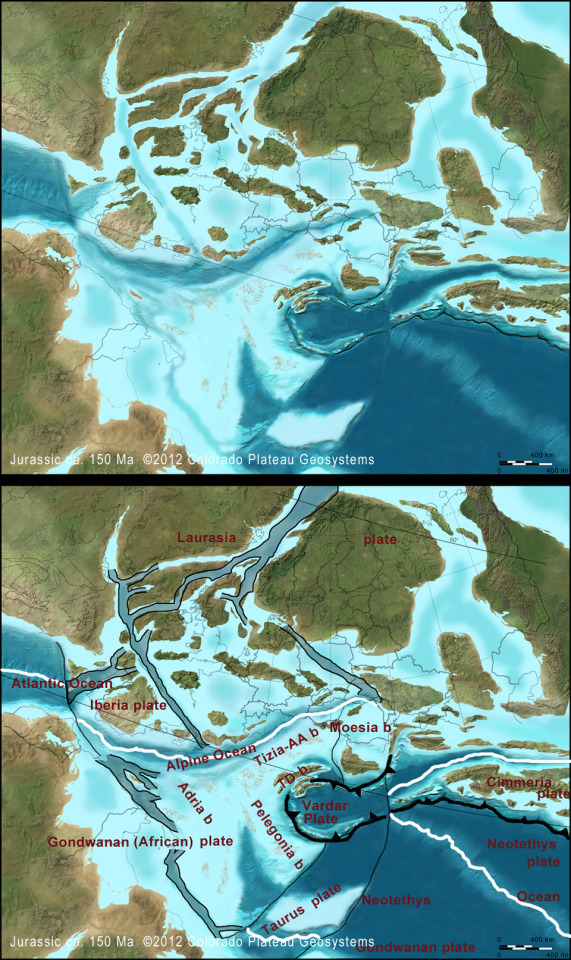

The is evidence in Europe of a major sea level drop which would have caused localized extinctions. I mean, look how low sea level dropped within 25 million years!
2.) Volcanism
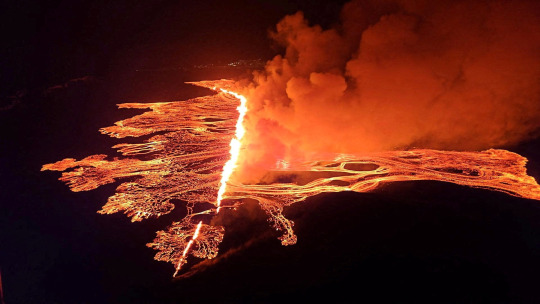
The Tithonian stage of the Late Jurassic saw the creation of a large volcanic plateau in the north Pacific and numerous volcanic deposits where Gondwana was beginning to separate. None of these explain the Laurasian extinctions though.
3.) Asteroid Impact

There were three minor asteroid impacts during the Late Jurassic; one in South Africa, one in Australia, and one in Norway. None were large enough to have a global impact.
5.) Sampling Bias

We simply might just be missing part of the picture. In western North America, we are actually missing a chunk of time in our rocks between the end of the Jurassic and the beginning of the Cretaceous. We also see many Jurassic lagerstätten worldwide and a definite lack of such in the early Cretaceous. There also appear to be decreases in sauropod diversity, megalosaurids, and stegosaurids as well as complete extinction of non-pterodactyloid pterosaurs. This could be because they real were going extinct or because they moved to enviorments that don't preserve fossils. We may never know.
6.) There wasn't a mass extinction, just a faunal turnover. This something we can see in the Cedar Mountain Formation. Perhaps there was another one from Jurassic to Cretaceous, we just haven't found it yet.

As of right now, the boundary between the Jurassic and Cretaceous is formally undefined due to the presence of more endemic flora and fauna than cosmopolitan (more species specific to one area than global distribution). What is agreed upon was that the Jurassic ended in a cooling period that continued into the early Cretaceous. Maybe one day we will have more answers but for now it remains a mystery.
17 notes
·
View notes
Text
Fossil Friday!
This is Falcarius.
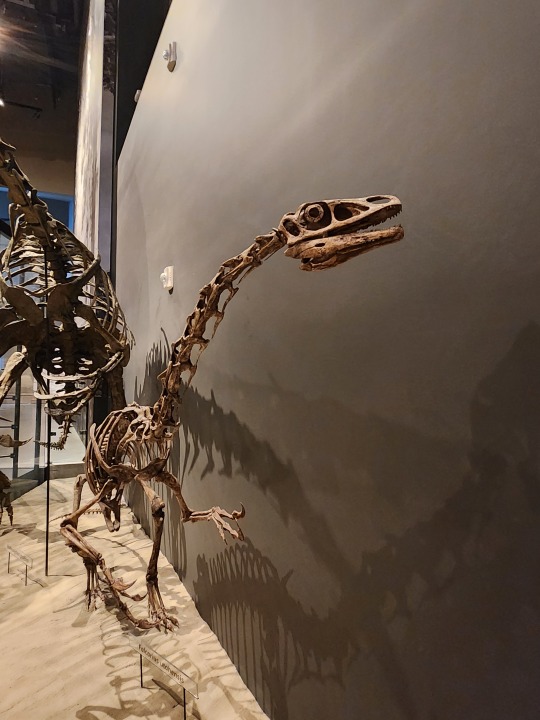
He is an early therizinosaur from the Cedar Mountain Formation in the Yellow Cat Member. He is about 13ft long and is the basal most therizinosaur showing a transition from traditional theropod body plan to the therizinosaur one.
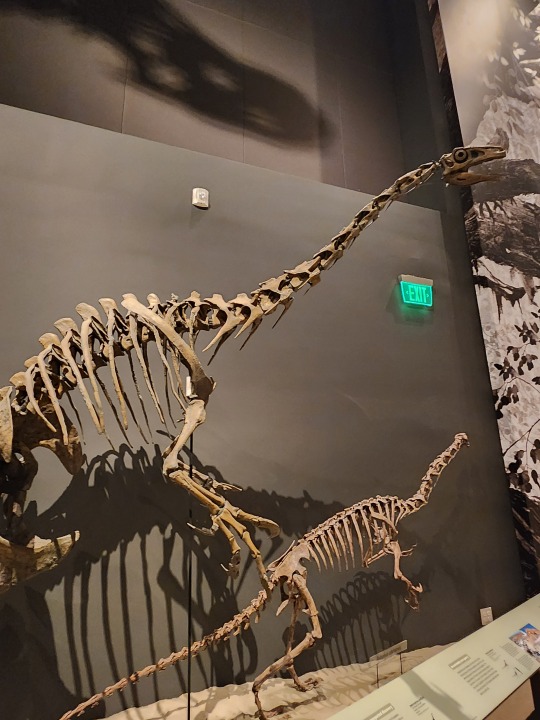
Look how tiny he ia beside cousin Nothronychus!
Many different ontogenetic stages have been found (growth stages) with the smallest being just over 3ft.
5 notes
·
View notes
Text
Wordplay Wednesday: Titanosauriform
Paleontologists (and honestly, biologists) love to use big words to name groups of animals. One of the words you've probably seen me use is titanosauriform. What does it mean?

Titanosauriforms are a clade of sauropods within the larger clade Macronaria. When form is tagged onto the end of a group it means that it includes the named group (in this case titanosauria) and their immediate relatives.
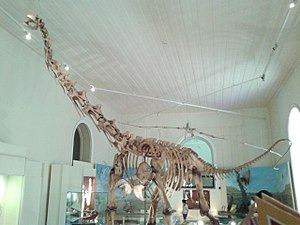
So whenever I use the term "titanosauriform" I'm simply saying it's related to titanosaurs.
6 notes
·
View notes
Text
Trivia Tuesday!
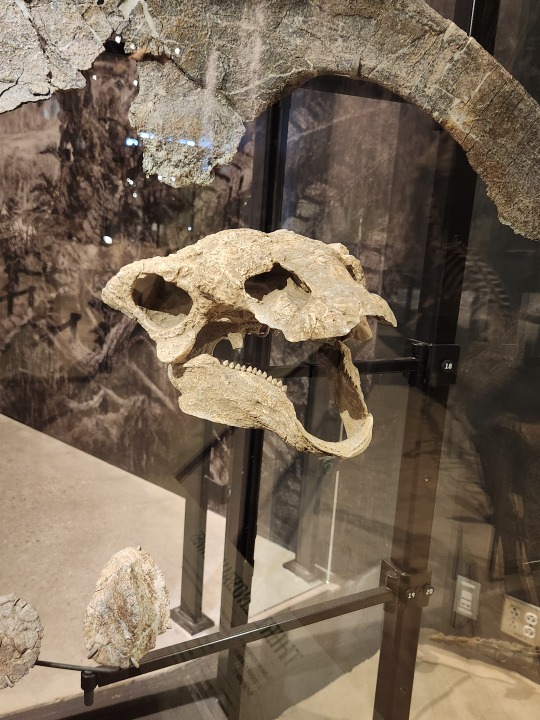
Where ia the Cedar Mountain Formation located?
Tune in thia evening for the answer!
Most of the Cedar Mountain Formation is found in Utah!
#paleontology#fossils#dinosaur#geology#trivia#cedar mountain formation#Were you paying attention in other posts?
18 notes
·
View notes
Text
Monday Musings: Asian Ties
Just like we saw last Monday with the similarities to European dinosaurs, there are similar ties with Asian dinosaurs in the Cedar Mountain Formation. Let's take a look at a few.
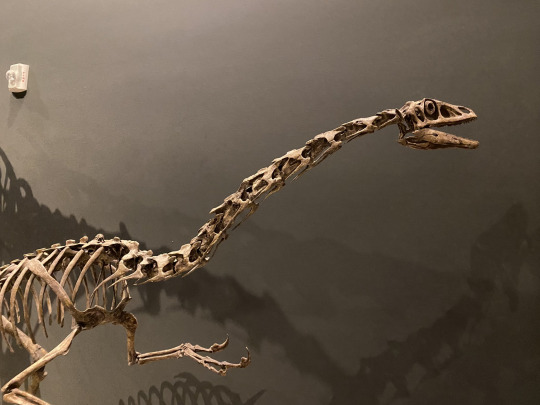
Falcarius is a therizinosaur from the Cedar Mountain Formation while Alaxasaurus is a therizinosaur from Mongolia.
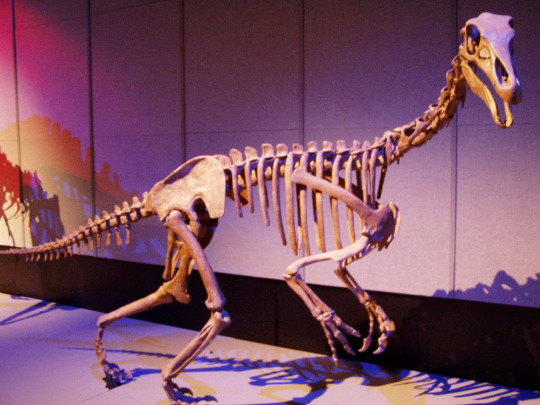
Geminiraptor is a troodontid from the Cedar Mountain Formation while it's cousin Sinornithoides was from China.
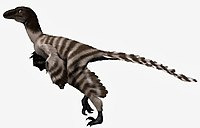

There is the Hadrosauromorphs Eolambia from the Cedar Mountain

and Jintasaurus from China.

Xingtianosaurus is an oviraptorid from China and there is a new undescribed oviraptorid in the Cedar Mountain Formation.

Finally, there is an undescribed neoceratopsian in the Cedar Mountain Formation like the many found in Asia like Archaeoceratops.

12 notes
·
View notes
Text
Science Saturday: Paleosols
Paleosol literally means "ancient soil." In geology and paleontology, a paleosol is a former soil preserved by burial under alluvium, loess or volcanic deposits.

Paleosols are frequently used to help determine the climate when they were deposited.

Figure 4. Photos illustrating paleo-Vertisol features in the Yellow Cat Member at Poison Strip, Utah (Figure 1; PS), where local conditions have maintained exceptional paleosol exposures of far greater quality than those at Utahraptor Ridge (Figure 3). (a) Two stacked paleosols (ps1, ps2); ps1 contains several carbonate-filled cracks (horizontal white arrows), and ps2 exhibits a zone of prominent, filled soil cracks (sc). Pathways of the downward translocation of sandier soil material from above into clayey soil material below are shown for selected cracks as yellow arrows at the left. (b) Closeup of soil cracks (sc) in ps2. (c) Another paleosol (ps) with prominent slickensides, identified by diagonal white arrows; general sense of shear along slickensides is shown by yellow arrows. Shear within this Early Cretaceous soil profile moved materials obliquely up and down. Features shown in these photographs suggest that perfect stratigraphic superposition (e.g., of paleosol organic matter and volcanogenic zircons) is very unlikely to exist within these paleosol profiles due to ancient pedoturbation. We propose that conditions were similar at Utahraptor Ridge during the Early Cretaceous (see text for further discussion).
(Joeckel et al, 2023)
A vertisol is a swelling clay soil. Swelling clays have a significant amount of ash in them which causes them to expand when wet. These clays tend to be incredibly sticky, adding 10 pounds to your feet in minutes. This indicates that there was likely some active volcanism during the early Cretaceous.

Paleosols can also be used to reconstruct paleo atmospheres. Oxidized paleosols like the red clay in the photograph above could indicate a rise in atmospheric oxygen.
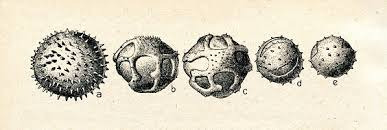
Paleosols often contain fossilized pollen which tells a lot about ancient ecosystems.
Who knew old dirt could be so informative!
#paleontology#fossils#geology#fun facts#science#prehistoric#palynology#paleosol#soil#cedar mountain formation
18 notes
·
View notes
Text
Fossil Friday: Utahraptor!

Remember this chimera? So, it may not be a real Velociraptor but there was a real dromaeosaur this size. It's called Utahraptor and it lived in, well, Utah during the early Cretaceous Period 135-130 million years ago.

It was found in the Cedar Mountain Formation near Moab in 1975 but it didn't get much recognition until 1991. There is currently a "Utahraptor block" that is in the process of being prepped out and has yielded remains of baby to adult Utahraptors (along with two iguanodontids).

Utahraptor is the state dinosaur of Utah and Utahraptor State Park was officially created in 2021 where the block was discovered.


16 notes
·
View notes
Text
Wordplay Wednesday: Barremian
Ever heard a paleontologist use the word Barremian? If not, you will now and if you have, now you get to learn what it means!
Geologists and paleontologists work with deep time and there is frankly, a lot of time to contend with. To make it easier, we break it up into various pieces. The largest is an eon. We have four of those: the Hadean, the Archean, the Proterozoic, and the Phanerozoic. We are in the Phanerozoic Eon.
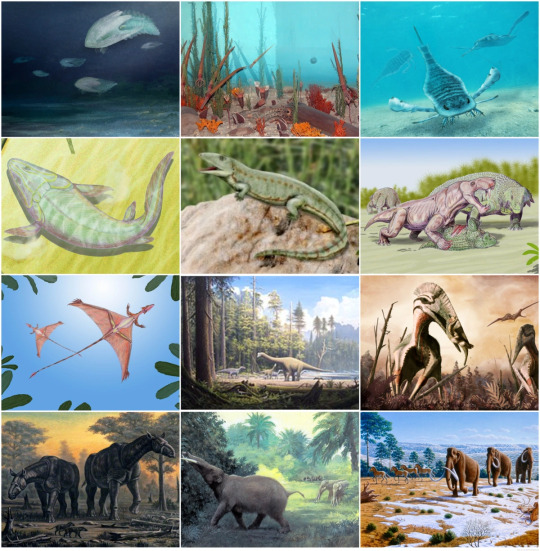
We then break those eons down into eras. So, take the Phanerozoic. It breaks down into the Paleozoic, Mesozoic, and Cenozoic Eras.

Each of the eras then breaks down into periods. For no particular reason aside from personal bias as a dinosaur paleontologist, let's break down the Mesozoic. The periods are Triassic, Jurassic, Cretaceous. Sound familiar, yes?

In turn, those periods are broken down into epochs. Take the Cretaceous. It is broken into the Lower and Upper Cretaceous Epochs. Finally, the Epochs are broken up into ages. The Barremian Age is one of these.

The Barremian occurred between 125.77 Ma and 121.4 Ma and is part of the early Cretaceous. Part of the Cedar Mountain Formation falls into this time frame, namely the uppermost Buckhorn Conglomerate and the Poison Strip Sandstone.
4 notes
·
View notes
Text
Trivia Tuesday!
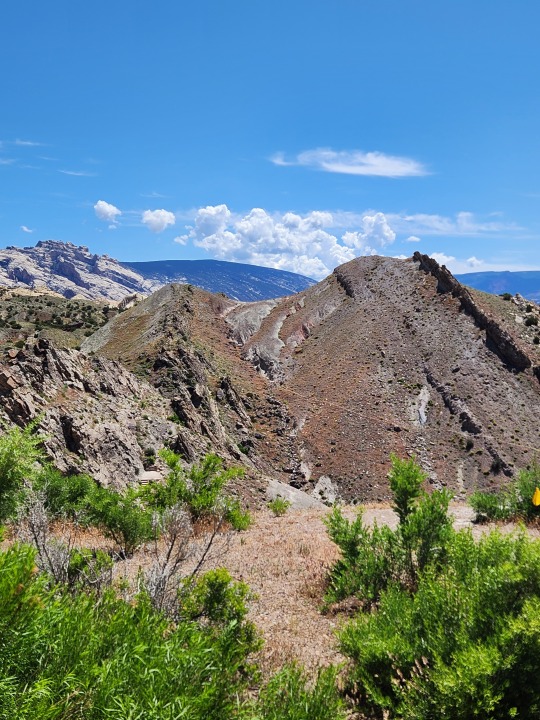

Technically, these are mostly Morrison but I swear there's some Cedar Mountain there. 😉
10 notes
·
View notes
Text
Monday Musings: European Ties
In the early Cedar Mountain fossiliferous members (namely Yellow Cat and Poison Strip) show a connection to Europe through similar dinosaurs.
Polacanthine ankylosaurs were abundant in the Cedar Mountain Formation and the group was named after the European Polacanthus.
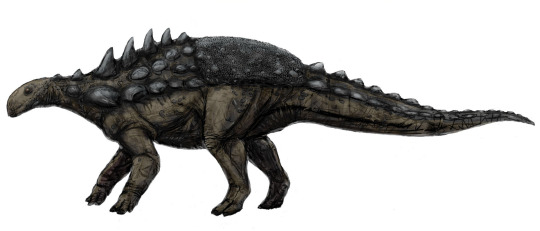
Other European nodosaurs (essentially ankylosaurs without tail clubs) from Europe include Hylaeosaurus

Europelta and Vectipelta.

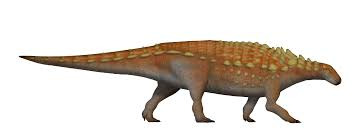
In the Cedar Mountain Formation, there are several nodosaurids as well such as Gastonia,

Sauropelta,

and Cedarpelta.
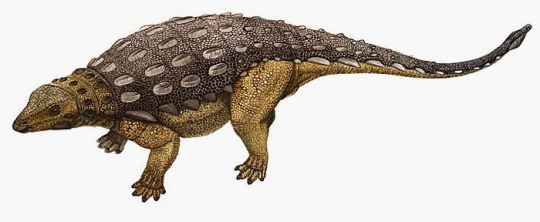
Another group you may be familiar with are iguanontians named after Iguanodon of Europe.
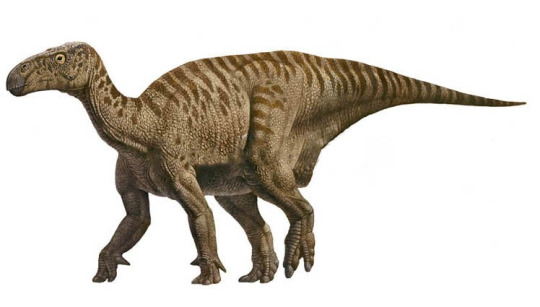
There are several other in Europe and many found in the Cedar Mountain Formation like Iguanocolossus
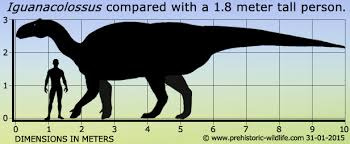
and Hippodraco.

Hypsilophodon was a neornithschian from Europe and a recent American equivalent was discovered in the Cedar Mountain but has yet to be named and described.

Sauropods, often associated with the Jurassic Period, continued to thrive in the early Cretaceous. In Europe, there was representation from several groups.
Haestasaurus is macronarians like Brontomerus (similar to the Jurassic Camarasaurus).

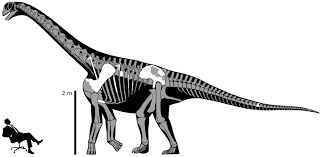
Soriatitan is a brachiosaurid from Spain.
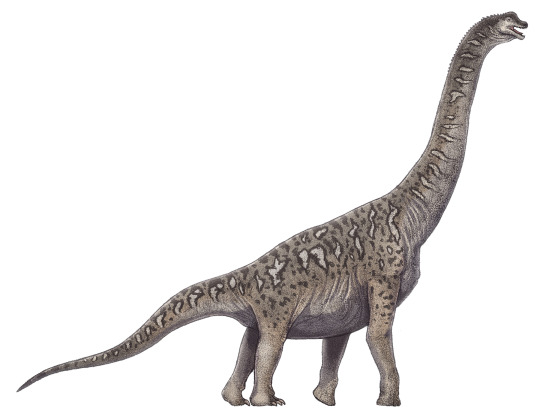
In the Cedar Mountain, there is Abydosaurus.

On the carnivore side of things, we had Eotyrannus, a tyrannosauroid from the Isle of Wight
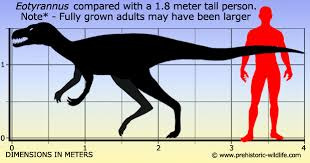
and Moros, a tyrannosauroid from the Cedar Mountain Formation.

There's Pelecanimimus from Spain as a representative of ornithominosaurs

and Nedcolbertia in the Cedar Mountain Formation.

Finally, there are the dromaeosaurs like Vectiraptor in Europe
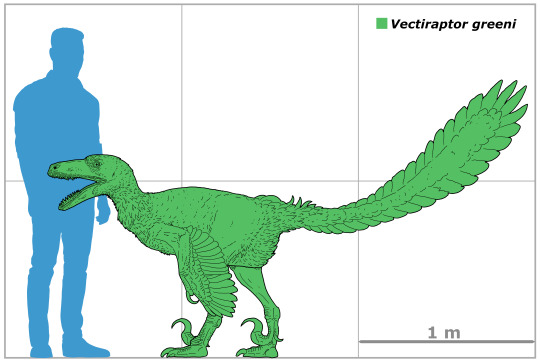
and Utahraptor in the Cedar Mountain Formation.
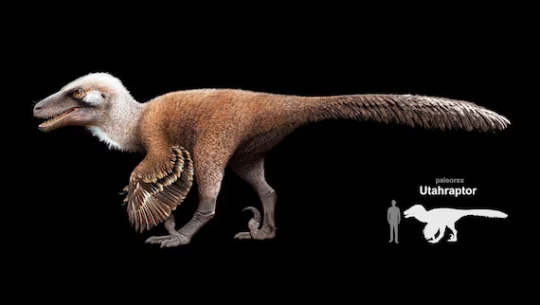
Tune in next week to see how the Cedar Mountain dinosaurs have ties to Asia as time progresses!
#paleontology#fossils#dinosaur#fun facts#cedar mountain formation#europe#north america#early cretaceous
12 notes
·
View notes
Text
Science Saturday
Science Saturday: How do you tell the Cedar Mountain Formation from the Morrison Formation? Answer: with a lot of trial and error. Both are characterized by colorful smectitic mudstones (though neither are only made of those rocks.



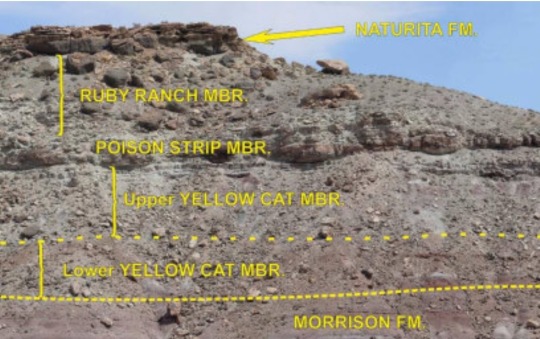

There is much variation). In the San Rafael Swell, the basal unit is the Buckhorn Conglomerate which is a resistant layer of rock that is very different than Morrison musdtone.

Furthur east, the basal unit of the Cedar Mountain Formation is either the Yellow Cat Member or the Poison Strip Sadnstone. The Poison Strip is another resistant layer easy to pick out from the crumbly muds,
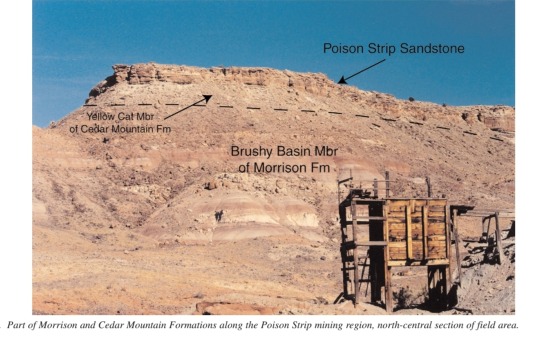
however, the Yellow Cat is variegated mudstones identified from the Morrison by being...drabber in color. Not a great difference haha. Where I work in Colorado, the Yellow Cat sits on top of the Morrison.


It took some thorough field investigation to find the contact which was a black chert layer and carbonate nodules in a calcrete layer.

At DinoFest, I was able to speak with the Utah State Paleontologist, Jim Kirkland about other differences to look out for and he mentioned that there were more ash in the Morrison than the Cedar Mountain which we did note in our area.
22 notes
·
View notes
Text
Fossil Friday!
This is Moabosaurus. This particular skeleton is at the BYU Museum of Paleontology.

Moabosaurus is a type of sauropod found in the Cedar Mountain Formation. As you can guess, this dinosaur was found near Moab, Utah. The quarry it was discovered in contained at least 18 individuals based on the number of braincases recovered.
Phylogenetic analyses in 2017 indicated that it was a basal titanosauriform macronarian neosauropod. However, a second study that year placed it in turisauria, a group outside of neosauropoda. In layman's terms, one group said it was more closely related to Camarasaurus

while the other said it was a more basal sauropod all together like Turiasaurus.


8 notes
·
View notes
Text
Throwback Thursday: Early Cretaceous Utah
What did it look like when the Cedar Mountain Formation was being deposited? Let's take a step back in time and she what Utah looked like 140-100 million years ago!

During the early Cretaceous, the Mowry Sea was just starting to inundate the continent (the Sundance Sea had retreated back into Canada before the Late Jurassic). The newly formed Sevier Mountains were in the western part of Utah and had many large rivers emptying from them to the northeast and into the Mowry Sea across broad, low-lying floodplains.

The Cedar Mountain Formation covers roughly 50 million years, It shows a change in climate from a semi-arid to humid. This change was heavily influenced by the transgression of the Mowry Sea.

#paleontology#fossils#geology#fun facts#dinosaur#cedar mountain formation#early cretaceous#utah#utahraptor#paleogeography
17 notes
·
View notes
Text
Wordplay Wednesday: Conglomerate
What is a conglomerate? It is a type of sedimentary rock that is characterized by it's rounded gravel, pebble, or cobble-sized grains cemented together by silica, calcite, or iron oxide.
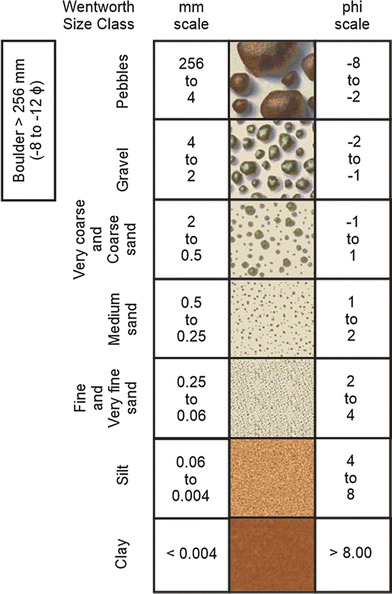
There are many ways in which a conglomerate can be formed. Turbidites are deep marine conglomerates created by turbidity currents.
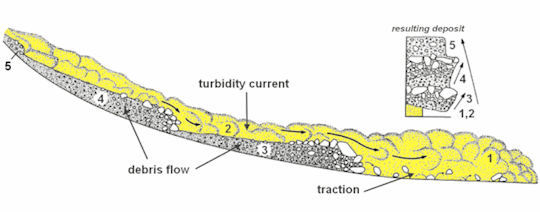
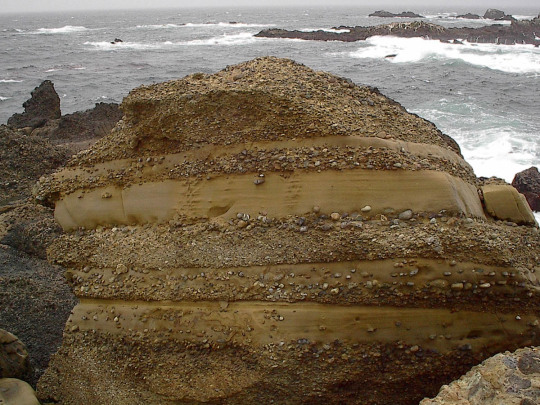
Many are fluvial in nature and occur in rivers with a high flow rate (immature river systems) such as the Buckhorn Conglomerate of the Cedar Mountain Formation in Utah, USA.
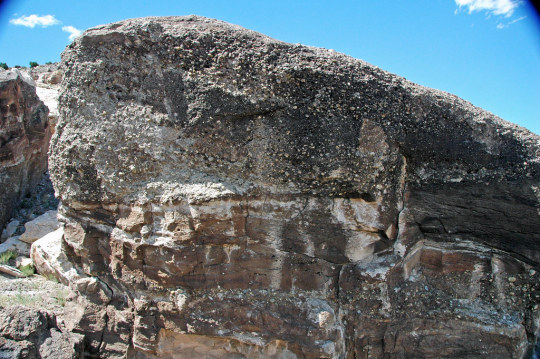
Alluvial fans along mountain fronts tend to make the thickest conglomerates. These are often called fanglomerates.

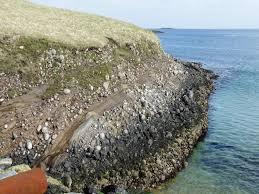
Debris flows also deposit conglomerates such as the Clarno Formation in John Day National Monument which was deposited by a lahar or volcanic mudslide.
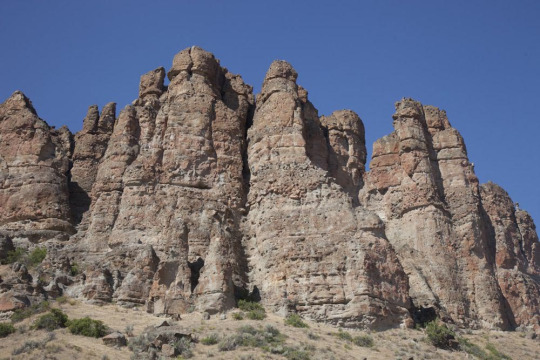
Glaciers create tillites, a very poorly sorted type of conglomerate (no discernable pattern to size or shape of grains).
#geology#fun facts#rock formations#stratigraphy#conglomerate#John Day Fossil Beds#national monument#cedar mountain formation#lahar#volcano#river channel
13 notes
·
View notes